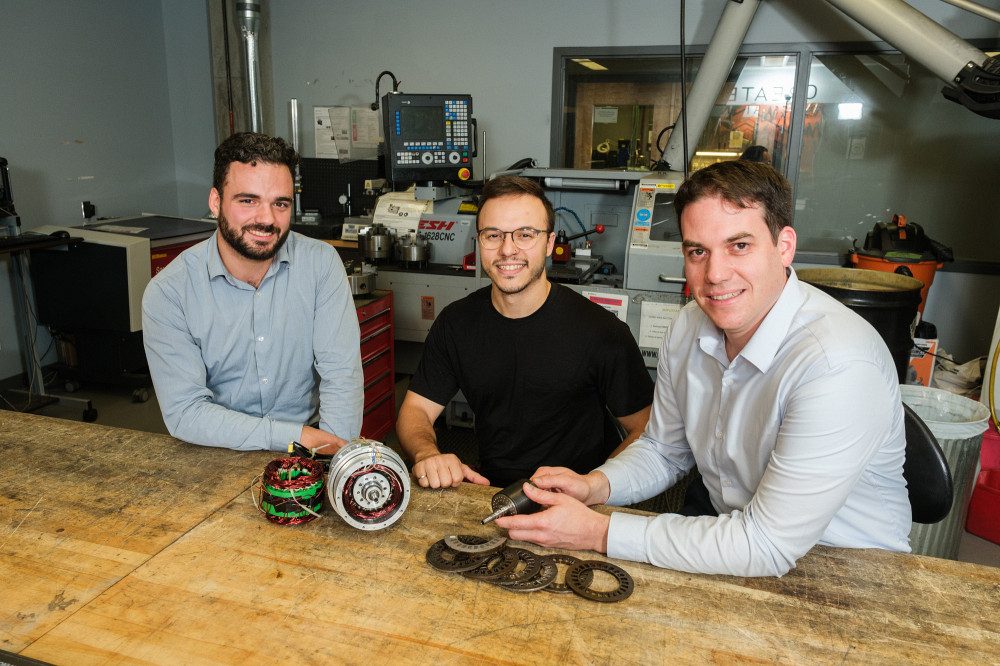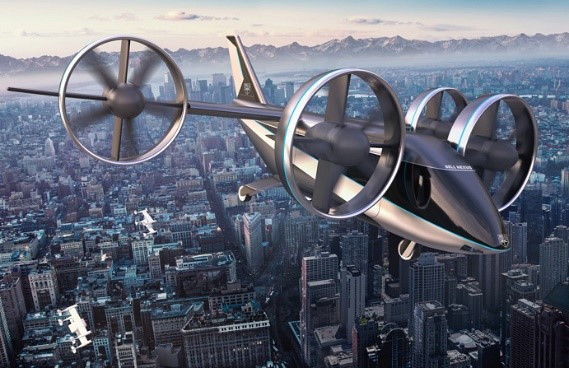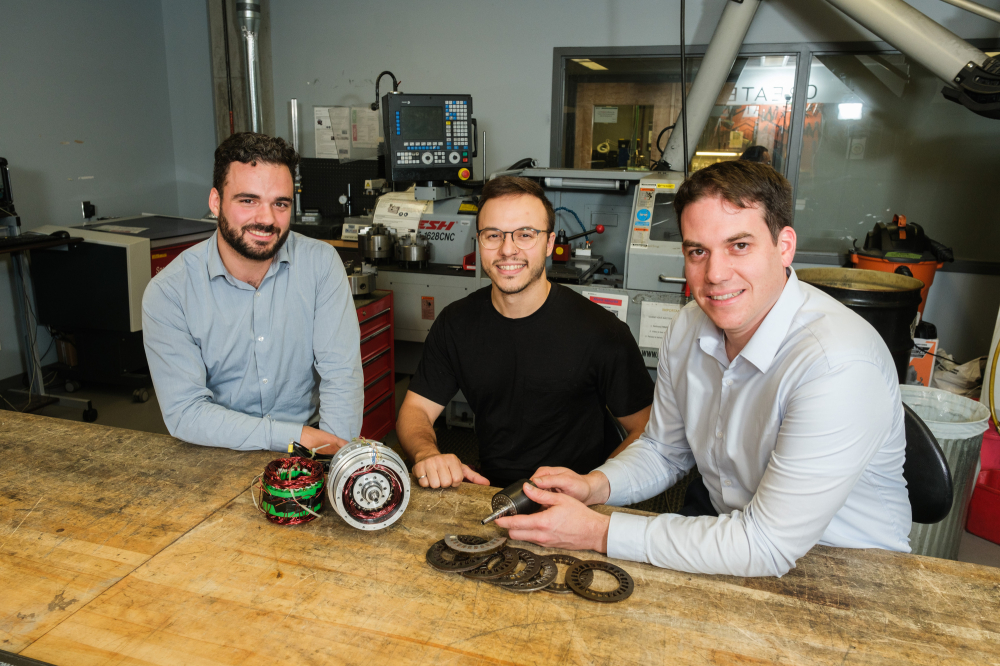
Photo: UdeS – Michel Caron
The image of a four-propeller airplane ready for vertical takeoff and landing is a dream not only for the innovation engineers of this world, but also for all those who have a sustainable, green dream.
Mechanical engineering professor Mathieu Picard smiles as he explains: “We can dream of this electric version of a flying taxi for big cities, but let’s just say we’re not at that stage yet. » Turning a 60-minute commute into 15 minutes isn’t for next week. “No, that’s for sure,” he continues, “but research allows us to move step by step toward what was just a utopian fantasy just a few years ago. »
Weight loss, a lifelong concern
Mathieu Picard, a member of the Interdisciplinary Institute for Technological Innovation (3IT), is part of a transdisciplinary project in collaboration with Bell Textron Canada as well as professors David Rancourt from Sherbrooke University and Jérôme Cros from Laval University. Bell wants to continue to advance in order to move towards technological maturity in terms of electric propulsion. The idea is to move towards the ultimate goal, but mostly keeping the focus on one of the first steps that needs to be achieved above all: reducing the weight of the electrical system of this type of vehicle.
Achieving vertical take-off and landing of an electric-powered aircraft is no easy feat. The main challenge lies in the weight of the system, a key aspect of technology evolution. And the element of the system that causes the biggest weight problem is the battery, hence the aim towards a hybrid system: several lightweight electric motors for propulsion powered by a turbogenerator.
At the heart of innovation

Photo: Provided
The project is called: “Evaluation of the potential of ultra-speed motors for electric propulsion”. In other words, we want to evaluate the potential gains in power density of an ultra-fast geared electric motor compared to a direct drive motor for electric propulsion.
With the idea of increasing the power of the aircraft’s electric propulsion system while reducing the weight of the battery, this project explores an ultra-high-speed motor solution. One way the team recommends is to play around with the positioning of the magnets, which would make the motor twice as light, thus increasing the device’s payload. This increase in power density would make it possible to transport, for example, two more people.
Professor Mathieu Picard
By sharing the drive to multiple propellers without the typical weight reduction and without the reduced efficiency due to the reduced size of the heat engine, a variety of aircraft designs and unconventional configurations can be considered ranging from short-range battery powered quadcopters to longer-range hybrid electric vertical take-off and landing (VTOL) aircraft. .
Another element that was the subject of the team’s research, this time concerns system cooling. Combined with air cooling, the engine can achieve a power density of 30 kW/kg. It is a technology that makes it possible to increase the payload by more than 250 kg of a flying taxi compared to a direct drive system. “Our proof of concept is complete,” concludes the researcher.
He dreams of the urban taxi of tomorrow
A trip to the store with a fast, quiet, eco-friendly and well-designed device that saves you time? We will have to be patient. This goal exists of course, but the needs related to the transport of goods or people in more isolated areas can also be met. And after that, why not: enable intercity flight by plane. To be continued!

